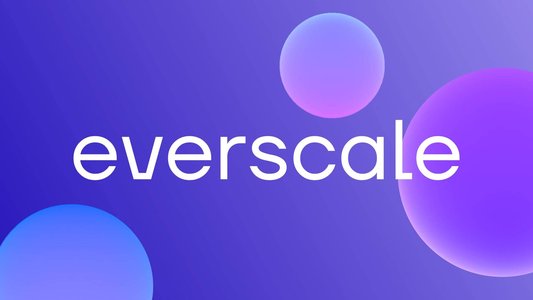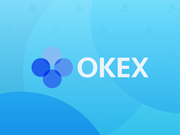Everscale (EVER) Part 1
6 minutes
Beginner
If you know the story of David and Goliath, then you know it symbolizes the triumph of underdogs. In modern usage, this phrase typically represents a situation where a smaller and weaker opponent faces a much larger and stronger adversary. This analogy is applicable to countless real-life situations, one of which is the cryptocurrency Everscale (EVER).
With a name like Everscale, you don't need to be a rocket scientist to understand the ultimate goal of this cryptocurrency: continuous growth through scalability. However, in the world of crypto, the bigger the better, and promising blockchains often initially overshadowed by their more well-known counterparts. And this is where the Goliath of Everscale comes in: Ethereum (ETH).
However, unlike the ancient illustration, David has an advantage in today's review of Everscale. It wouldn't be an exaggeration to say that Everscale is currently one of the most technologically advanced blockchains. By combining the key innovations of recent years in blockchain into one complete package, Everscale is an extremely strong competitor among smart contract platforms.
Among the numerous features that set Everscale apart from the rest, it boasts one that no other blockchain can currently offer. This feature lies in the technology of dynamic sharding and multi-threading, which allows for infinite sharding to process any load size and increase node performance. Therefore, many predict that in the future, it will become one of the leaders in the blockchain industry. But let's take it step by step.
A brief history of Everscale (EVER)
Originally named Free TON (Telegram Open Network), this decentralized peer-to-peer blockchain was launched on May 7th, 2020. In essence, the codebase of the Everscale platform is based on the TON technology, originally developed by Nikolai Durov, the technical director of the messaging app Telegram. As a result, the Everscale community built a blockchain on top of this codebase.
After months of fighting with the United States Securities and Exchange Commission, which challenged the legality of the secondary sales of GRAM (Telegram's proposed token), Telegram shut down its project. However, in response, the company made its codebase open-source, which allowed the Everscale community to take on development efforts in the future.
Thus, Everscale is a project managed by a group of professional validators and community developers. It is a separate project, even though it is based on the Telegram blockchain.
Understanding how Everscale works
The Everscale architecture includes a master chain and multiple working chains (shards). Whenever the capacity of all current working chains reaches 90%, a new working chain can be added to avoid even the slightest overload. As with Ethereum 2.0 and Polkadot, the network security depends on the master chain, as it contains block proofs for each working chain in the network.
At the same time, each working shard exists as a separate blockchain with its own set of data, rules, and validators (who also submit their proofs to the Masterchain). Nodes that produce blocks in the working shards and Masterchain also act as validators. However, to create and verify blocks, a validator must first lock up over 350,000 EVER to join the network. The staking of validators who attempt to act maliciously (e.g., trying to submit incorrect blocks) is ejected from the network.
Problems that Everscale (EVER) solves

The real highlight of this blockchain is the fact that its architecture includes both multithreading and sharding. It is the only existing blockchain that incorporates both of these features, allowing it to scale with unprecedented efficiency.
Splitting
Note that every time a new validator node joins this blockchain, it is assigned to a thread and a working chain. Since a working chain is a segment, validators in this segment do not need to process data from the entire network. Instead, they only process a limited amount of data. Therefore, the overall network throughput is equal to the total number of transactions that are collectively processed by the segments.
Multithreading
Imagine that you have two dApp applications: one is a popular decentralized exchange with countless users, and the other is a small token packaging application that is only used periodically. Each of these dApps requires very different computing power. Since the thread that executes smart contracts for the decentralized exchange can be overloaded with too many requests, this can lead to a decrease in performance.
Thus, multithreading is a way to avoid low performance, so each validator of a working chain is assigned to a thread. In other words, each thread can be split into two because different groups of validators execute different sets of smart contracts.
Network Security
The network can scale almost infinitely thanks to multi-threading and segmentation. However, at this point, savvy crypto enthusiasts usually wonder why no one is trying to send an incorrect block to the Masterchain. The answer lies in the fact that Everscale implements the SMFT (Soft Majority Fault Tolerance) protocol to increase network security. This protocol is a variation of the Proof of Stake consensus model.
The SMFT protocol requires verification of every block sent to the network to prevent the propagation of false blocks. The process works as follows:
- The validator proposing a new block sends this block to all nodes in the working chain.
- In the second stage, some of these nodes (called BP or Broadcast Protectors) verify that at least 51% of all validators have received the proposed block. Then the BP send this information to the masterchain.
- Then validators randomly select several verifiers. These verifiers must confirm the correctness of the block, after which they send proof to the Masterchain.
It is important to note that at any of these steps, attackers attempting to harm the network can incur financial penalties. Examples include verifiers losing a portion of their staked funds as punishment for not sending a verification message, validators slashing their deposited deposits for not sending proof of block receipt, or even sorters experiencing a reduction in their share as punishment for sending an invalid block.
In other words, since it is impossible to predict which node will become a verifier, a successful attack on the network would require a majority of nodes to be malicious. Therefore, remaining honest is the best strategy for validators looking to preserve their stake. Consequently, from a security standpoint, the SMFT protocol makes Everscale comparable only to Bitcoin.
Due to the extensive material, we have decided to split the article into 2 parts. In the second part, we will tell you about the innovative use of smart contracts, the Everscale ecosystem, and also about the native token EVER. Link to Part 2.



